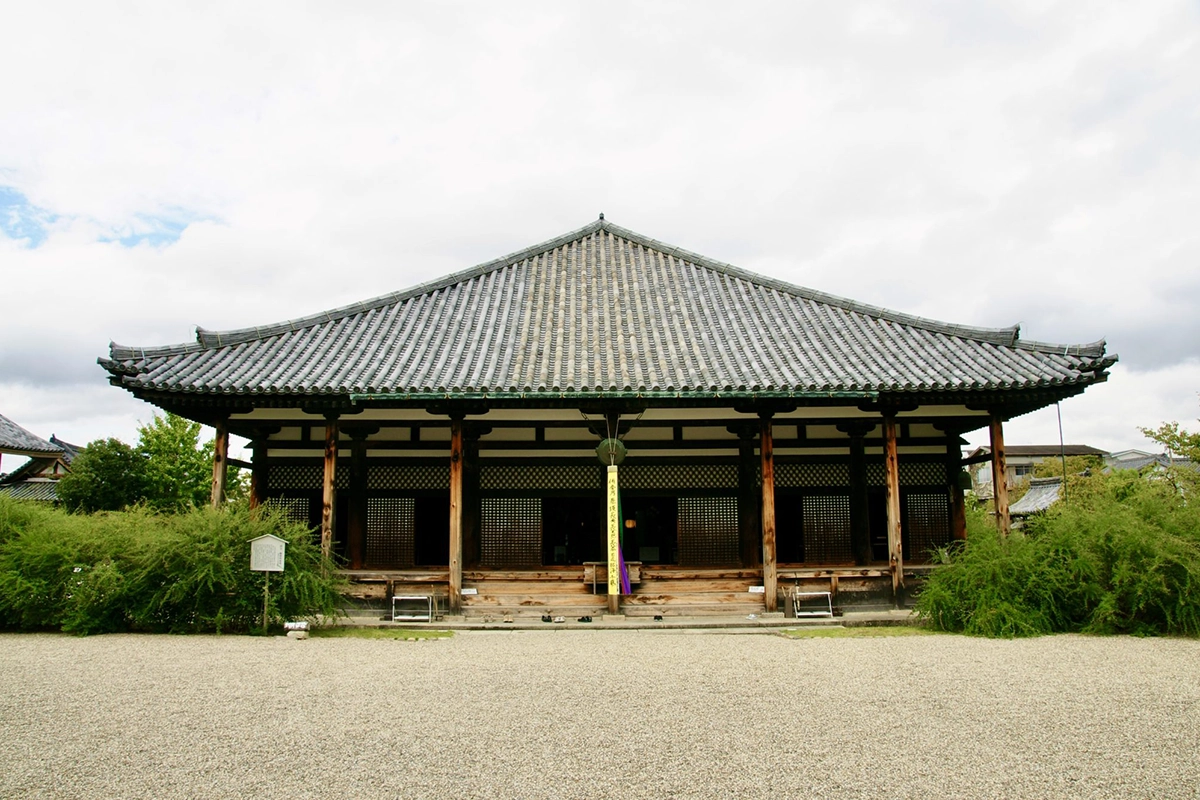Gangō-ji: Where History and Serenity Converge in Nara
Nestled in the heart of Nara, Japan, the ancient city that preserves the tales of Japan’s rich history, lies Gangō-ji, a serene haven where history and serenity converge. This Buddhist temple, one of the oldest in the nation and a UNESCO World Heritage Site, is a testament to the enduring spirit of Japanese culture and faith. Founded by the illustrious Prince Shotoku during the 6th century, Gangō-ji has evolved from a humble center of Buddhist learning into a timeless cultural gem that beckons travelers from across the world.
The illustrious history of Gangō-ji reaches back to the Asuka period, which spanned from the late 6th century to the early 8th century. It was a time when Prince Shotoku’s influential reign elevated the status of Buddhism in Japan. This revered figure, known for his significant contributions to politics and religion, undertook the task of building this temple to nurture the spiritual growth of Buddhist monks. Gangō-ji, one of his earliest creations, served as a haven for contemplation and learning.
Over the centuries, the temple weathered the tumultuous winds of time. War and natural disasters wreaked havoc upon its original structures, but the indomitable spirit of Gangō-ji always prevailed. Today, the temple stands as a testament to resilience, with many of its present buildings dating back to the Edo period, from 1603 to 1868. Among these, the hondō, or main hall, holds a place of special reverence. It is a living testament to the fusion of Japanese and Chinese architectural styles, boasting intricate details and aesthetics that have been celebrated for generations. This hall stands proudly as a national treasure, inviting all who pass through its doors to glimpse the timeless beauty of bygone eras.
One of Gangō-ji’s most enchanting aspects lies not just in its historic architecture but in its meticulously crafted gardens. As you traverse the temple grounds, you’ll discover a tapestry of lush, manicured landscapes, each offering a unique perspective on the art of Japanese garden design. Crafted by skilled artisans, these gardens are living masterpieces, a testament to the enduring artistry of Japan.
As you explore Gangō-ji’s gardens, you’ll find yourself immersed in their tranquility. The Kairo-Teien, or corridor garden, envelops you in a sense of serenity as you stroll along a meandering path, accompanied by the soothing sound of water. The Renjishiki garden is a living canvas of colors and patterns, a reflection of the changing seasons and the passage of time. The Zen garden, true to its name, encourages quiet contemplation amidst carefully raked sand and meticulously placed stones.
Gangō-ji, in all its historical and natural splendor, stands as a captivating destination for the curious traveler. As you traverse the temple grounds, you’ll not only witness the grandeur of the past but also find a tranquil sanctuary that invites you to connect with nature and your inner self. It’s a destination where the echoes of Prince Shotoku’s profound vision still resonate, where the whispers of history intertwine with the tranquility of the present.
For those who seek to immerse themselves in the rich tapestry of Japanese culture and history, Gangō-ji is a pilgrimage that promises awe-inspiring moments and a deeper appreciation for the spiritual and artistic legacies that continue to flourish. As you explore this ancient temple, you’ll find that history and serenity merge seamlessly, creating an unforgettable experience that will remain etched in your heart and memory.
